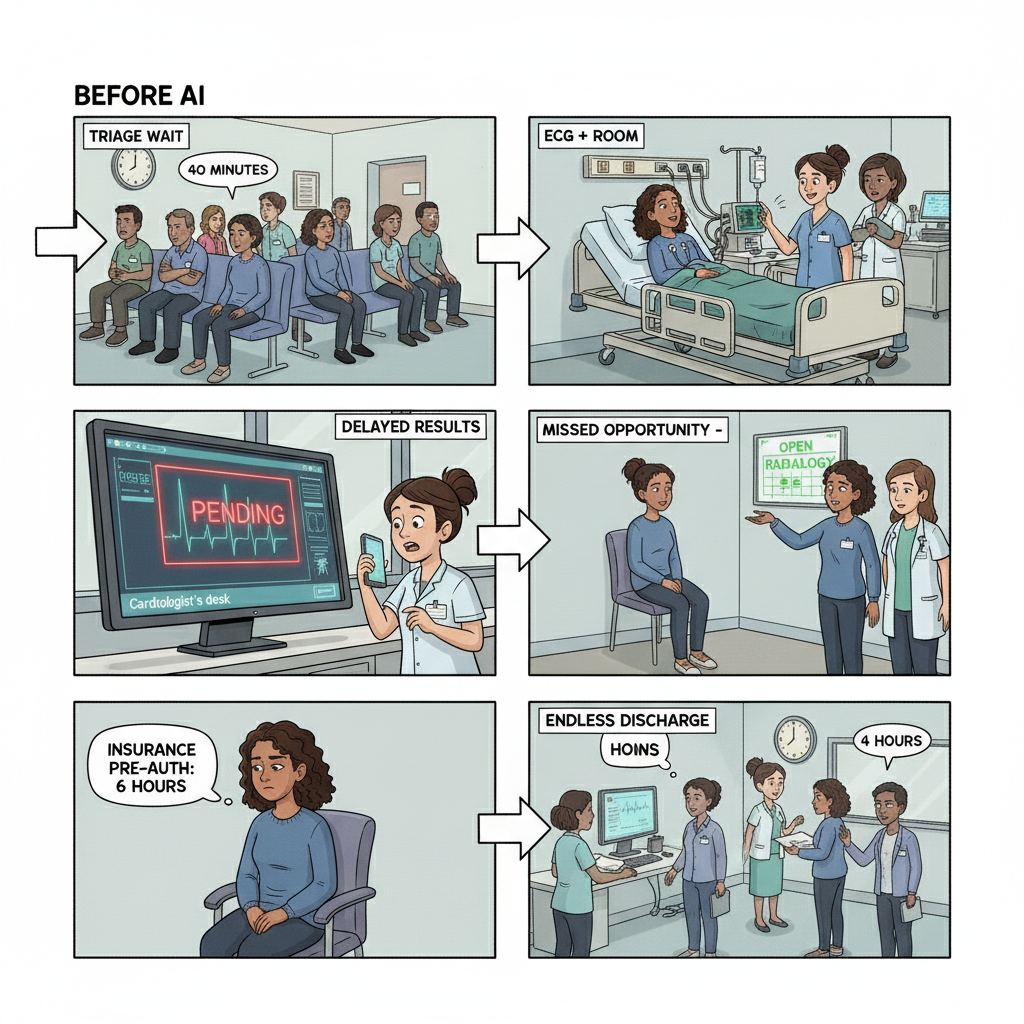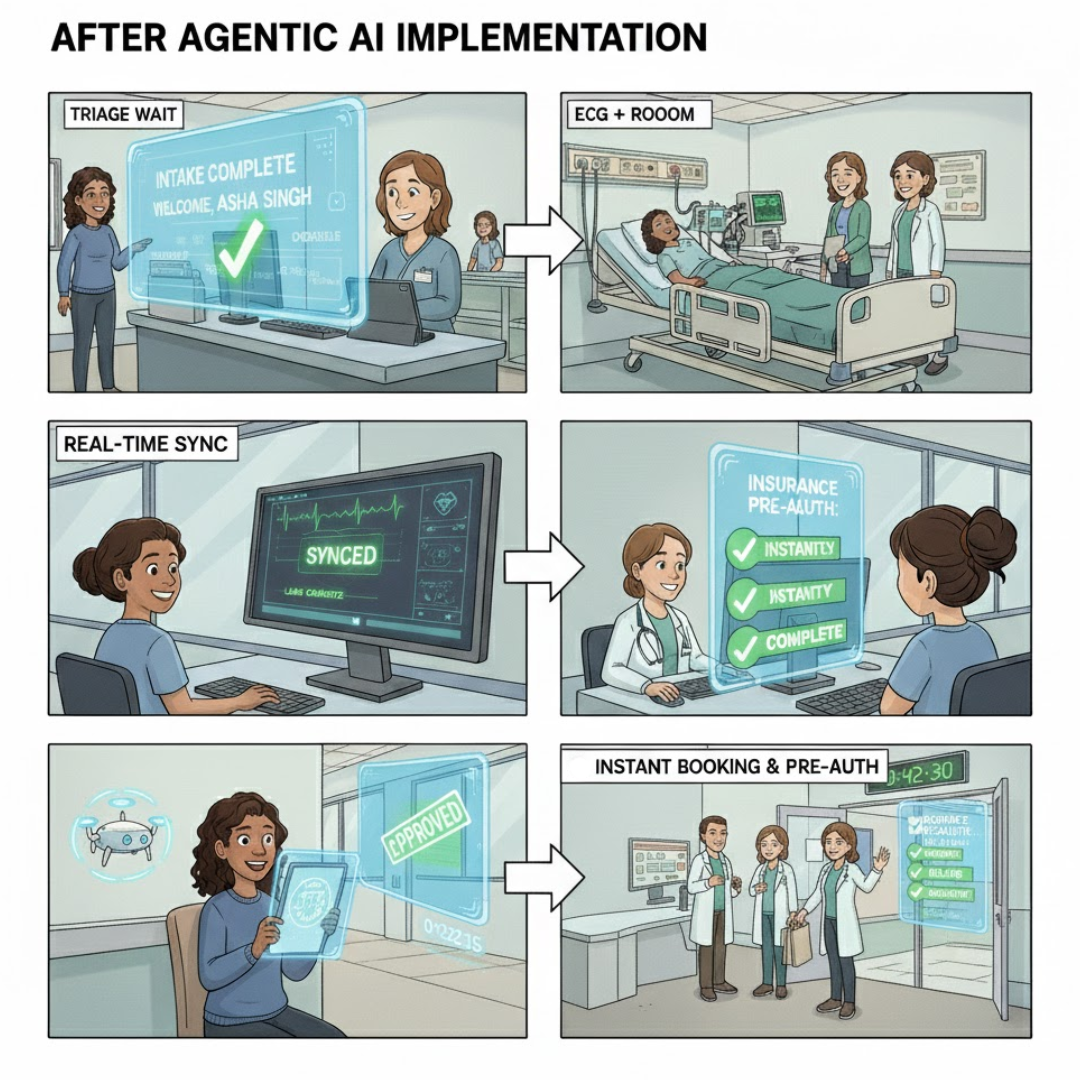Join our WhatsApp Community
AI-powered WhatsApp community for insights, support, and real-time collaboration.
Agentic AI is transforming healthcare by automating triage, radiology, insurance, discharge, and patient support, cutting delays and giving clinicians more time for real care.

| Why is AI important in the banking sector? | The shift from traditional in-person banking to online and mobile platforms has increased customer demand for instant, personalized service. |
| AI Virtual Assistants in Focus: | Banks are investing in AI-driven virtual assistants to create hyper-personalised, real-time solutions that improve customer experiences. |
| What is the top challenge of using AI in banking? | Inefficiencies like higher Average Handling Time (AHT), lack of real-time data, and limited personalization hinder existing customer service strategies. |
| Limits of Traditional Automation: | Automated systems need more nuanced queries, making them less effective for high-value customers with complex needs. |
| What are the benefits of AI chatbots in Banking? | AI virtual assistants enhance efficiency, reduce operational costs, and empower CSRs by handling repetitive tasks and offering personalized interactions. |
| Future Outlook of AI-enabled Virtual Assistants: | AI will transform the role of CSRs into more strategic, relationship-focused positions while continuing to elevate the customer experience in banking. |
Walk into a hospital on any Monday morning: triage is backed up, radiology is scrambling, labs are out of sync, billing is behind, and the discharge list barely moves.
The issue isn’t clinical skill. The issue is that one patient journey touches 7–12 systems, none of which talk to each other.
Humans end up serving as the hospital’s unofficial API layer.
And that’s exactly where agentic AI fits.
Asha arrives with chest discomfort.
Here’s how her day usually goes:

Now layer in agentic AI:

Same hospital. Same doctors.
Just better coordination.
It’s not a chatbot with medical trivia.
It’s a digital workforce that can:
It doesn’t replace clinicians — it replaces the busywork that slows clinicians down.
Agents can do all of this in seconds:
The entire ecosystem is:
And here’s the thing:
Platforms like Microsoft Healthcare Agent Orchestrator already validate that AI can safely coordinate imaging, EHR, billing, and oncology workflows.
You can’t allow an AI system to:
That’s why the governance layer matters:
Get this right, and you get safe automation that scales.
Where the time loss is obvious:
Ideal first steps:
Once ROI is clear, layer on:
You’ll see hospitals where:
This isn’t a “future of healthcare” prediction. It’s already happening in parts of India, the US, and Europe — just unevenly distributed.
Hospitals don’t need bigger dashboards.
They need workflows that move.
Agentic AI fixes the invisible bottlenecks that slow care and drain staff capacity. With a secure, multi-agent, multi-LLM setup, hospitals unlock:
The organizations that adopt this early won’t just streamline operations — they’ll set the benchmark for what modern patient-centered healthcare feels like.
Fluid AI is an AI company based in Mumbai. We help organizations kickstart their AI journey. If you’re seeking a solution for your organization to enhance customer support, boost employee productivity and make the most of your organization’s data, look no further.
Take the first step on this exciting journey by booking a Free Discovery Call with us today and let us help you make your organization future-ready and unlock the full potential of AI for your organization.

AI-powered WhatsApp community for insights, support, and real-time collaboration.
.webp)
.webp)

Join leading businesses using the
Agentic AI Platform to drive efficiency, innovation, and growth.
AI-powered WhatsApp community for insights, support, and real-time collaboration.